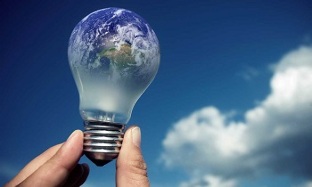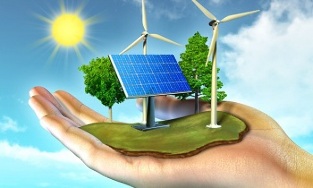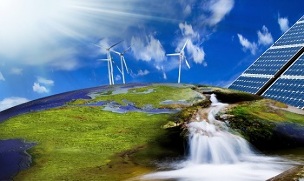
In today's world, energy conservation is an integral part of the life of a civilized society. It’s about health, saving money and the convenience of life.
But one of the most important (global) features of energy saving is the protection of the environment from negative impacts.
Energy saving concept
The term 'energy saving' has been used for a long time. Today, energy saving is characterized by a conceptual device.
Energy conservation is based on the energy source as an energy carrier that can be used in any activity. Energy saving is any activity aimed at reducing the use of energy sources without compromising the main function of their use. Despite the extremely precise accuracy of the definitions, the concepts of "energy saving" and "energy efficiency" are often confused. In this respect, the definition of the latter is given. Energy efficiency is a set of certain characteristics that reflects the impact of the use of energy sources and the cost of the energy sources themselves. Energy saving efficiency is characterized, among other things, by the energy efficiency class, which reflects the degree of usefulness of the product in terms of energy saving. Special energy surveys are performed to determine energy efficiency.
Principles of energy conservation
Now that we have defined the basic concepts in this area, it is worth reflecting on the principles of energy saving:

- Using alternative energy sources.
- Use of secondary energy sources.
- Use of non-energy intensive technologies and equipment.
- Measures to ensure the rational use of available energy sources. Assessing the economic feasibility of using energy-saving technologies and solutions.
This list can be attributed to both the principles of energy saving regulation and the main approach to private house insulation. The most important thing to remember is that energy saving includes not only additional ways of obtaining energy, but also activities that involve the saving and rational use of available energy.
Alternative energy sources
There is a lot of talk today about alternative energy sources. As a general rule, we mean renewable energy sources. What is renewed endlessly on planet Earth? Of course it is water, sun, wind, crust. Of course, if you go into detail, solar activity will also change over time, and the surface of the earth’s crust will become thinner, but it’s all on the scale of the Universe. In our civilization, we are talking about renewal - we believe that in the coming centuries, the Sun will not darken and the Earth will not fly off its orbit.
Thus, today we consider the following energy sources as alternatives to oil, gas, coal and wood:
- The energy of the Sun.Solar panels and collectors are used to use such a source. The former are solar panels that directly convert the sun’s energy into electricity. Solar collectors do not convert energy into electricity, but heat the coolant for later use (for example, to heat private house water).
- Wind energy.Windmills that generate electricity using wind-bladed blades are very popular in Europe. Germany, for example, already procures a third of its electricity using this renewable energy source.
- The energy of water.It's not just about hydropower. Today, there are heat pumps that convert the heat of the water in the pond or pool into stable water heating to heat the house and supply hot water.
- The energy of the Earth.The heat pumps described above can also use heat from groundwater or the upper crust for utilities. Such installations are very popular because they do not require a water source or wind nearby: the coolant can be placed, for example, in special pipes placed under the lawn or in a garden well.
Secondary energy sources

Energy recycling is one of the basic principles of energy efficiency. Improving the efficiency of the ventilation and air conditioning system used in a building is only possible by recycling the heat of the extracted air. This process of some of the heat leaving the building (air heats up in the room from work tools, people in the room) is called recuperation. In this respect, energy saving is the activity of conserving the energy available in a room.
The principle of operation of the recuperator is very simple - thanks to a certain platinum that conducts heat well, the air extracted from the room heats the cold streams coming from the street without mixing with it. As a result, it is not ice but 2-3 degrees of heated air that enters the house, which contributes to a more comfortable microclimate in the room and also allows you to save on heating as the temperature in the room increases due to the warm flow. The recuperators are of the plate type, as described above, with a rotating (internally rotating element) and an intermediate heat carrier. The large selection of recuperator manufacturers allows you to choose a device for different rooms and customers.
How can communal energy sources be used wisely?
The rational use of available resources involves not only the installation and operation of energy-saving equipment, but also compliance with a certain system. Energy saving mode is a lifestyle in which energy saving is provided at the household level. If you have set a goal - to save on utility bills, you must first install equipment that allows you to avoid wasting kilowatts by automating your power supply and measuring energy. It should be selected on the basis of a label that confirms that this device or device results in energy savings. Energy optimization of resource use is only possible with the reasonable operation of all equipment. Turning off the light on time in unoccupied rooms, wasting hot water and carefully monitoring the correct setting of automatic metering devices, as well as the heat and electricity consumption of the house, can achieve significant results in saving energy and personal money.
What is a passive house?

Energy efficiency and energy saving are inextricably linked to the concept of passive housing. It combines a series of energy saving measures that together ensure low energy consumption. The history of passive house technology begins in Darmstadt, where it was first developed by physicist Feist. Calculating the energy efficiency of a house gave him an idea to create a building that doesn’t even need to be connected to heating in the winter - a passive house. At that time, houses in Germany consumed 200 kWh / m² per year. The passive house, on the other hand, only needs 10 kWh / m² per year to stay adequate and even throughout the year. The basic criterion of a passive house is the creation of a closed building envelope with increased thermal insulation and low thermal conductivity. This can be achieved by using energy-saving thermal insulation materials, eliminating the so-called cold bridges (places in the building envelope through which cold penetrates the building: facade fasteners, window frames).
Evaluate the effectiveness of energy-saving technologies
In order to bring the level of energy consumption of a building closer to the level of a passive house, high heat-resistant materials, modern engineering equipment, renewable and secondary energy sources must be used, in short, measures that ensure energy savings. At the same time, energy efficiency is caused by the cost of a particular innovation in the house and the impact that such a decision has on the owner. The first step is to calculate the impact of the new technology on the production and use of a particular type of resource. In this case, you need to evaluate:
- The amount of resource savings (the difference between the resources used by energy-efficient and conventional equipment during the billing period when producing the same amount of energy).
- Impact of energy production (compared to equipment options using the same amount of resources, the difference or ratio of the amount of energy generated in a given period).
These indicators give an idea of the need to calculate the economic impact. Calculate by comparing the cost of purchasing new (and possibly old) equipment with the income from energy savings when a waste machine is replaced with a more modern one (for a given period of time). This difference will be the effect that the owner gets after a certain amount of time after applying the energy efficient solution. Installing recuperators or solar panels usually pays off in 3-5 years.
In summary, it's worth noting that saving energy isn't just about saving money. First, he is worried about tomorrow in which our children will live.


























